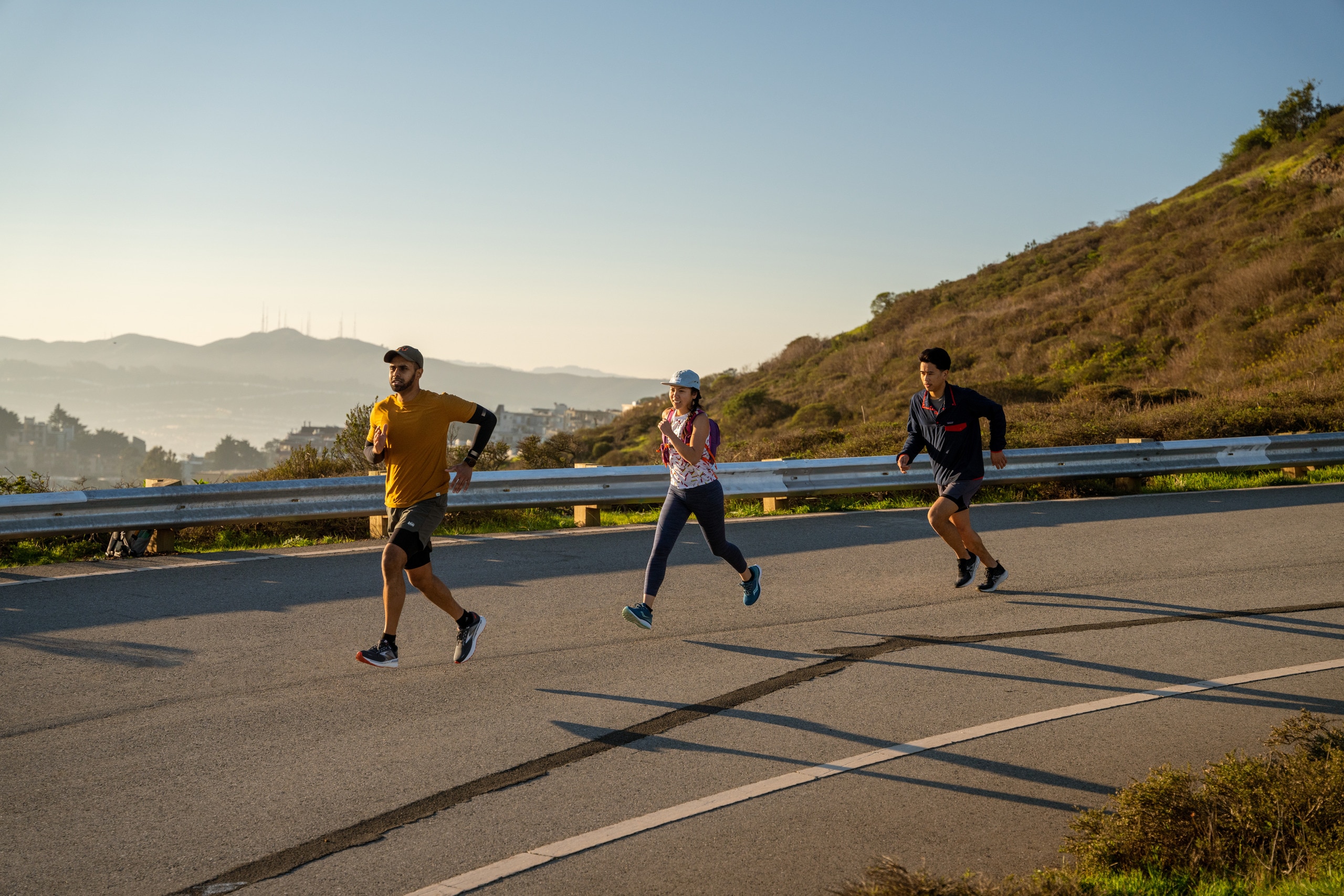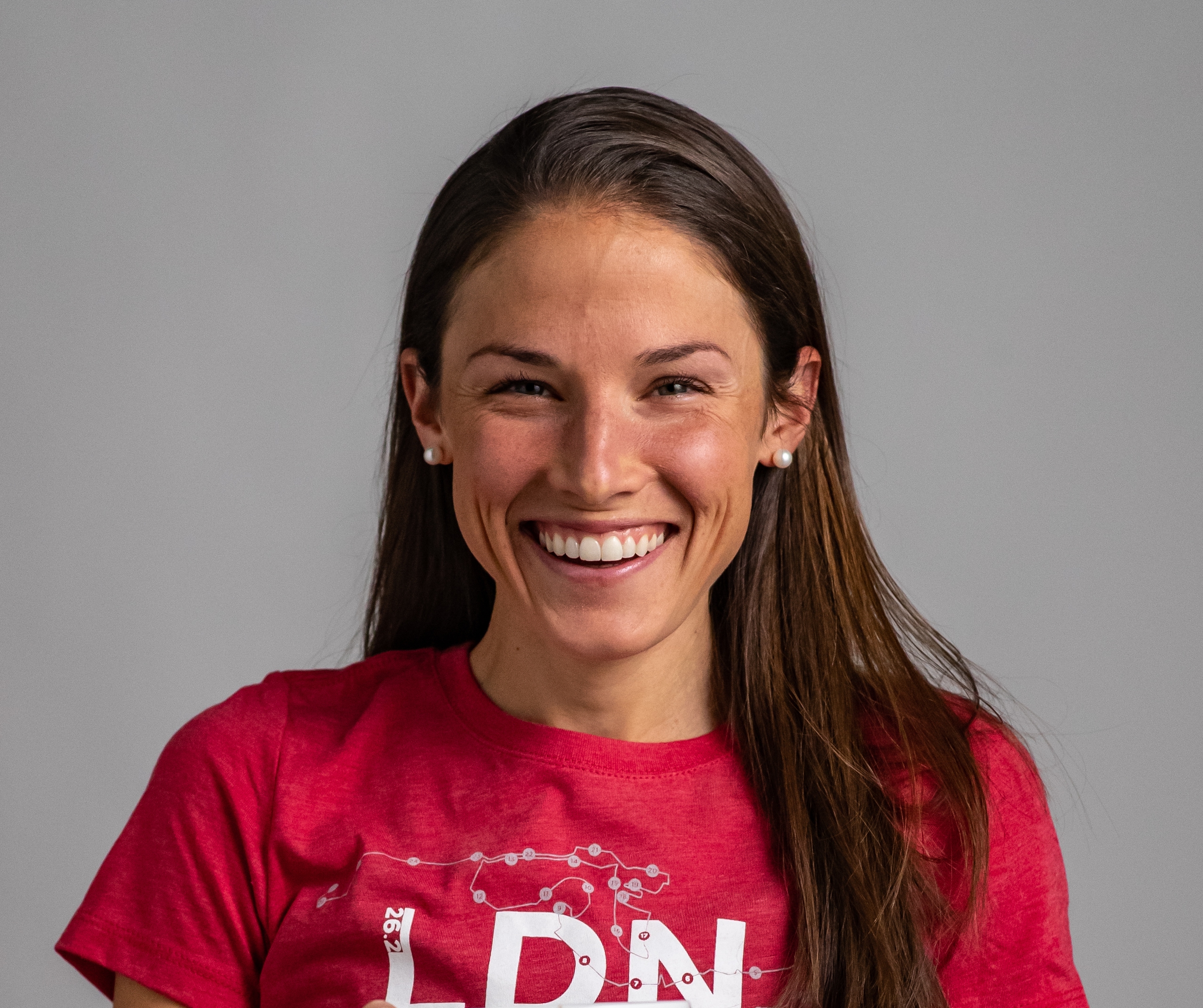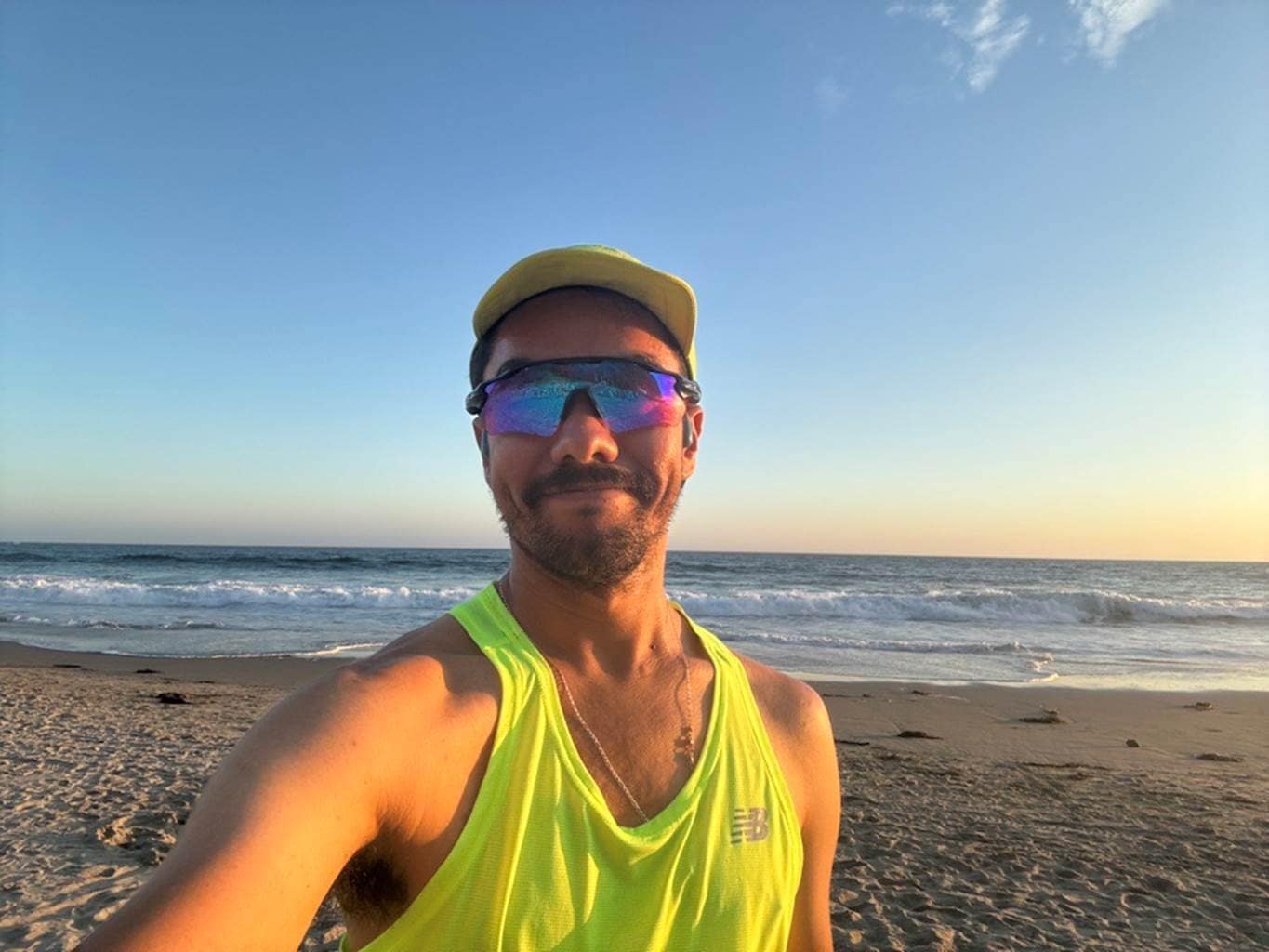Whether you’re targeting a road 5K or trail marathon, the shoes you race in can mean the difference between a smooth, springy ride and a blister-riddled sufferfest. But, what makes a great pair of racing shoes for one person may look very different for another. The best choice for you will depend on factors including race terrain and distance, as well as your build and personal preferences.
Rather than starting your search from scratch, let REI staff members with a foothold in the running world point you in the right direction. The following racing shoe recommendations have been tried and tested for optimal race day performance.
Staff Picks
For quick recommendations, check out our roundup below, or scroll down for more in-depth reviews.
Best One-Quiver Shoes for Road Races: Saucony Endorphin Speed 4 (men’s) (women’s)
- Best Shoes for Trail Races: Saucony Peregrine 14 (men’s) (women’s)
Best Shoes for 5K Races: HOKA Mach 6 (men’s) (women’s), New Balance Fuelcell Rebel V4 (men’s) (women’s)
- Best Shoes for 10K and Half Marathon Races: adidas Adizero Boston 12 (men’s) (women’s)
Best Racing Shoes for Marathons: adidas Adizero Adios Pro 3 (men’s) (women’s)
Best Racing Shoes for Ultra-Marathons: adidas Terrex Agravic Speed Ultra (men’s) (women’s)
- Best Racing Shoes for Heavier Runners: HOKA Skyward X (men’s) (women’s)
Best One-Quiver Shoes for Road Races
Saucony Endorphin Speed 4 Road-Running Shoes
Cushioning Maximum
Midsole PWRRUN PB foam; nylon plate
Outsole XT-900 carbon rubber
Heel-to-toe drop (mm) 8
Weight 14.5 oz. (women’s); 1 lb. 0.4 oz. (men’s)
Quality road racing shoes are responsive, lightweight, comfortable, and confidence-boosting. The Saucony Endorphin Speed 4 is all of that and more. REI store manager Alan Ortega called these his “quiver killer,” saying, “if you’re going to buy just one pair of shoes, buy these… They’re the perfect balance of speed and cushion.” Fan Zhou, REI general manager for running and footwear, agreed, saying the shoes are “approachable for anyone looking to run fast.”
The Endorphin Speed 4’s predecessor (the 3) was named Best All-Around Shoe & REI Co-op Editors’ Choice Award Winner, and the latest model raises the bar even higher. It features a nylon plate, which is less springy than carbon while still providing responsiveness through various paces, plus superfoam cushioning. And you’ll be able to move easily through your stride with the shoe’s SPEEDROLL technology. Durability and comfort are also priorities with the Endorphin Speed 4: a lattice outsole with XT-900 carbon rubber as well as updated uppers and sockliners will support you through longer efforts.
Best Shoes for Trail Races
Saucony Peregrine 14 Trail-Running Shoes
Cushioning Moderate
Midsole PWRRUN
Outsole PWRTRAC rubber
Heel-to-toe drop (mm) 4
Weight 1 lb. 1.1 oz (women’s); 1 lb. 2.8 oz. (men’s)
To rip on trails, you need shoes that are grippy, reliable, and as tough as the terrain you’re racing on. The Saucony Peregrine 14 is a popular choice for trail races because, as Zhou put it, the shoe offers a “confidence-inspiring grip in a sleek and stripped-down package.” Features include debris-resistant construction, comfortable sockliners, moderate cushioning and drop, and rubber outsoles with grippy 5mm lugs.
Racing shoes don’t always make the best training shoes, since they’re typically designed for optimal performance but not necessarily longevity. That seems to be the case with the Peregrine 14. Ortega classified the shoe as an event shoe rather than a daily trainer, explaining that “you will feel the midsole give out after a bit.” Once you’re confident the Peregrine 14 is your racing shoe (you might test them out on quality sessions like tempo runs or hilly speed work), protect their life by saving them for race day.
Best Shoes for 5K Races
HOKA Mach 6 Road-Running Shoes
Cushioning Maximum
Midsole Single-stack SCF EVA
Outsole Durabrasion rubber
Heel-to-toe drop (mm) 5
Weight 13.6 oz. (women’s), 1 lb. 0.4 oz. (men’s)
New Balance FuelCell Rebel V4 Road-Running Shoes
Cushioning Maximum
Midsole FuelCell foam
Outsole Rubber
Heel-to-toe drop (mm) 6
Weight 11.8 oz. (women’s); 15 oz. (men’s)
When giving your all on a 3.1 mile course, you want to feel light and fast. The HOKA Mach 6 and New Balance FuelCell Rebel V4 can help you do that.
According to Zhou, the HOKA Mach 6 “brings HOKA’s cushioning prowess into a sleeker and lighter-weight package.” He added that it’s versatile enough for a post-race coffee stop, too. Designed for speed, this shoe fits like a glove and features maximum cushioning, super-critical EVA foam midsoles, durabrasion rubber outsoles, and a modest heel-to-toe drop of 5mm, with a 37mm heel stack height and 32mm forefoot stack height (35mm and 30mm, respectively, in the women’s model). The women’s Mach 6 weighs 13.6 oz. and the men’s model weighs 1 lb. 0.4 oz.
The FuelCell Rebel V4 is similarly conducive for shorter races. Zhou summarized it this way: “No plate, just premium cushioning in a lightweight package that's ready to go fast.” It features midsoles with propulsive FuelCell foam, synthetic/mesh uppers, and a 6mm heel-to-toe-drop, with a 30mm heel stack height and 24mm forefoot stack height. The lightest shoe in this lineup, the women’s model weighs a scant 11.8 oz. and the men’s model weighs 15 oz.—the only men’s recommendation under a pound.
Best Shoes for 10K and Half Marathon Races
adidas Adizero Boston 12 Road-Running Shoes
Cushioning Maximum
Midsole Lightstrike/Lightstrike Pro
Outsole Continental rubber
Heel-to-toe drop (mm) 8
Weight 1 lb. 1.6 oz. (women’s); 1 lb. 3.2 oz. (men’s)
For moderately long races—think 10Ks and half marathons—the adidas Adizero Boston 12 shines. As Zhou explained, it combines “responsive cushioning [for middle-long distance races] … with the snappy benefit of a nylon plate.” Ortega also called the shoe “snappy” and “fun.”
The magic is in the midsoles. The Adizero Boston 12 midsoles feature both Lightstrike and Lightstrike Pro cushioning, delivering on both comfort and responsiveness. They also have carbon energy rods that offer tuned stiffness and encourage forward motion. Other features include rubber outsoles, an 8mm drop, and a sizable stack height (39mm heel and 31mm forefoot). While still light enough to be considered a racing shoe, this is one of the heavier additions to this list, weighing a few ounces north of a pound for both women’s and men’s sizes—but Expert Advice’s editor for Run finds that the margin is unnoticeable due to the light, unobtrusive upper and responsiveness underfoot.
Best Racing Shoes for Marathons
adidas Adizero Adios Pro 3 Road-Running Shoes
Cushioning Maximum
Midsole Lightstrike Pro EVA foam
Outsole Continental rubber
Heel-to-toe drop (mm) 6
Weight 13 oz. (women’s); 1 lb. 0.2 oz. (men’s)
There’s a reason adidas used the word “pro” when naming the adidas Adizero Adios Pro 3. Ortega described it as a shoe “for the person that wants to go fast.” With the lightest as well as highest (stack height-wise) design in this round up, Zhou explained that the shoe features “all of the best innovation and tech from a stalwart in the running industry in one package.”
What they’re both getting at is that the Adizero Adios Pro 3 is designed for efficient movement and optimal performance, whether you’re a weekend warrior or a podium-chasing pro. The Adizero Adios Pro 3 blends a double layer of Lightstrike Pro EVA foam midsoles, carbon-infused energy rods, and rubber outsoles, creating a cushioned, snappy, and super-lightweight experience. Like with other carbon-plated racing shoes, you’ll want to minimize the time you spend training in these. Your Adizero Adios Pro 3s aren’t for easy runs or slow long-distance runs—save them for tough speed workouts your legs will thank you for extra recovery from and, of course, your goal marathon.
Best Racing Shoes for Ultra-Marathons
adidas Terrex Agravic Speed Ultra Trail-Running Shoes
Cushioning Moderate
Midsole Lightstrike Pro EVA foam
Outsole Continental rubber
Heel-to-toe drop (mm) 8
Weight 1 lb. (women’s); 1 lb. 3 oz. (men’s)
No shoe will make an ultra-marathon feel easy. But when you’re racing more than 26.2 miles, you want footwear that can pad your landing, even in the later miles, and minimize the damage to your feet and legs. The adidas Terrex Agravic Speed Ultra is the answer. Zhou dubbed it “the best execution of a plated trail runner on the market today, combined with the award-winning Lightstrike Pro midsole… a winning combination.” Several REI customer-reviewers included some variation of “springy” in their reviews, and just as many celebrated the shoe’s grip.
In addition to the rocker-shaped midsole, the Terrex Agravic Speed Ultra features abrasion-resistant seamless overlays, rubber outsoles and lugged tread, and energy rods that add stiffness. It’s a moderately cushioned shoe with a high 8mm drop, making it well-suited to those taking on the trail with some speed.
Best Shoes for Heavier Runners
HOKA Skyward X Road-Running Shoes
Cushioning Maximum
Midsole SCF EVA/carbon fiber plate
Outsole High-abrasion rubber
Heel-to-toe drop (mm) 5
Weight 1 lb. 2.4 oz. (women’s); 1 lb. 6.6 oz. (men’s)
The recently released HOKA Skyward X has the potential to change the game for heavier runners and those who tend to wear through their shoes more quickly. According to Zhou, this shoe offers “the maximal cushioning you’ve come to love from HOKA, but with a carbon plate to make the miles fly by.” Its features include flat-knit uppers, rubber outsoles, a 5mm drop and midsoles with convex carbon fiber plates that create a springy and suspended ride.
The Skyward X is both the heaviest shoe on this list as well as the one with the most substantial stack height. The women’s model weighs 1 lb. 2.4 oz. and the men’s model weighs 1 lb. 6.6 oz., and all stack heights (men’s and women’s heel and forefoot) measure above 40mm. But, don’t let that fool you into thinking it will feel bulky. As one REI customer-reviewer shared, “While these shoes are heavy, they do not run heavy. With the carbon plate, they run light and fast.” Several other customer-reviewers agreed, calling the Skyward X “plush” and comparing them to marshmallows.
Buying Advice for Racing Shoes
Even if you wear them just a handful of times per year, it’s important to choose your racing shoes wisely. Consider the following factors while shopping for the best racing shoes for you.
- Terrain: First, determine whether you’ll be racing on roads or trails. While you can get away with wearing the same shoe for different surfaces, you’ll have a better experience if you shop more specifically. Trail shoes, for example, are grippier and stiffer than road shoes, which are lighter and more flexible.
- Foot strike: Another consideration is your foot strike, or the way your feet plant on the ground. Most runners are basic, or neutral, pronators, with feet that roll slightly inward when they land. Other runners have feet that roll excessively inward (overpronators) or outward (supinators). It’s ideal to find shoes that support your foot strike, especially if you’re an overpronator or supinator; the right pair can help you find a smoother stride and reduce your risk of injury.
- Support: Your foot strike can also help you determine the level of support you need in your shoes. Neutral runners, mild pronators, and supinators do well in neutral shoes, which lack some motion control. Mild to moderate overpronators should look for stability shoes, which often feature guide rails to control excessive side-to-side motion. More severe overpronators may want to try motion control shoes, which counter overpronation with stiffer heels and firm posts that reinforce the arches.
- Cushioning: How cushioned you want your racing shoes to be is largely a matter of personal preference. The spectrum goes from barefoot shoes, which have a very thin sole, and little to no cushioning, arch support, or stability features, to maximally cushioned shoes, which have thick midsole padding and soft foam underfoot. Minimal and moderate cushioning lie in the middle.
- Heel-to-toe drop: The heel-to-toe drop (often just called “drop”) of a shoe refers to the difference in cushioning between the heel and toe of a shoe, and plays a role in the way your feet plant on the ground. Traditional running shoes have a drop of 10mm, give or take, with ample cushioning in the heel to support heel striking. Lower-drop shoes have a drop more than 0mm but less than 8mm. Zero-drop shoes have the same cushioning beneath the heels and toes, thus promoting a midfoot strike.
- Weight: When it comes to racing, lightweight materials are often preferable to heavier ones due to less drag and bulk. While it’s true that racing shoes are typically lighter than training shoes—five of the eight women’s models featured above weigh just one pound or less—weight is one of several factors that matter for performance, and the best racing shoe is not always the lightest one. Super lightweight shoes may also put you at higher risk of injury, so they should generally be reserved for races and quality sessions, and not worn for everyday training.
- Carbon fiber plates: A relative newcomer to the running world, carbon fiber plates are now built into the midsoles of many racing shoes (and some training shoes). These plates serve as a springboard that help propel you forward when you push off the ground, thus increasing your efficiency and making it easier to run faster. Many runners love the effect of carbon fiber plates, but they’re not for everyone, and there are plenty of great racing shoes without them.
- Comfort and fit: Last but not least, you obviously want your racing shoes to feel good—not just on your feet, but at race pace, too. Most specialty running stores allow you to take the pairs you’re interested in on a test run in the store or right outside. If that’s an option, definitely take advantage. If you’re shopping online, make sure you know the return policy before purchasing, as many but not all retailers allow you to return lightly worn pairs if they aren’t working for you. When trying on, make sure to try both the left and right shoes (since many people have a slight size discrepancy), to wear the socks and/or insoles you plan to race in, and to leave at least a thumbnail’s length of space at the top of the toe box to allow for some natural swelling to occur as you run.
Our Process
Four REI Co-op staff members contributed to this article with their running shoe recommendations and opinions based on their personal experience training and racing in them. We also pulled from the reviews of a handful of REI customers. The eight choices above reflect the latest and best running shoes for beginners currently offered at REI.







































































